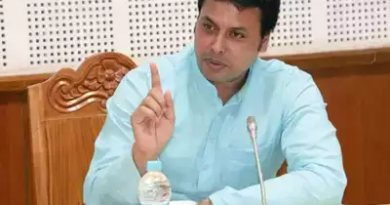Indian Museum, Kolkata Observes 207th Foundation Day

Prof Smritikumar Sarkar, Chief Speaker
Suroopa Chatterjee
The Indian museum once called The Imperial museum, in Kolkata, has always held a certain draw for art, history, culture lovers as these centers are a symbol of preservation and promotion of our ancient heritage and culture. It’s the largest and oldest museum in India.
The Indian Museum, an autonomous organization under the Ministry of Culture, Government of India true to its yearly tradition held The Nathaniel Memorial Lecture, “Cabinet Curios to Contemporaneity: situating the Indian Museum” on 2nd February 2021, on the occasion of 207th year of its establishment. It was founded in 1814 by the Asiatic Society of Bengal in Calcutta on a written request of a Danish botanist Nathaniel Wallich, who first put the proposal of forming a museum from his own collection.He was made an honorary curator and history honors his memory as the man behind the museum movement.
Director of the Indian Museum, Shri Arijit Dutta Choudhury stated that it was an important day for the museum movement that had started from Park Street from Asiatic society. He recollected the wonderful work Nathanile Wallich had done as a protagonist in preserving our history, heritage and culture.
This year, Prof. Smritikumar Sarkar, Vice Chairman, Board of Trustees, Indian Museum, Former Vice-Chancellor, The University of Burdwan, West Bengal, was the Chief Speaker. He spoke on the occasion outlining some truly valuable and practical suggestions as a way forward with new vigor in this new era post the pandemic.
He began by saying museums in essence were self-strengthening cultural power centers that built an identity and were used by the colonial rulers to establish their strong presence. A premium symbol of culture, the Indian Museum can be an important medium to communicate and give direction to a nation. Also, it was time to come out of the colonial coat and establish our own modern identity that would resonate with the population of today.
The first thing to note he felt is that there is much learning from countries like Indonesia which has an impressive record in the area of repatriation. The museum authorities should make a strong case to place with the power desks for repatriation of our national objects, repeatedly, as many objects are lying in foreign museums. Another major challenge is the fear mindset that exists about allowing common access to the museum collection. He expressed that major museums across the world are trying to make their ideas, programs, collections, paintings, objects more publicly accessible which still remains a challenge of 21st-century museum management here. American museums are forerunners of open storage which is a very important area of future management in the museum realm.
The days of museums being run singularly are gone and it’s time to reset thinking for running them through teamwork. This would include conservation scientists, exhibition specialists, planners, public educators, information scientists from proper management of scientific and cultural data of museums. Funding for museums should be in focus by involving marketing experts who can promote museums. Also, museums should learn to share and learn from other museums and adjust policies with regards to threats. The way forward according to him was that the Indian museum though the largest and oldest features nowhere in the top 20 museums of the world in global listing. It should develop to emerge as a facility of education, source of cultural resonance, connect with the larger public and become an effective means of communication and eventually find a place of pride in the top twenty museum list.
Speaking on the sidelines Dr Sayan Bhattacharya, Education Officer at the Indian Museum, expressed that the concept of the museum is changing. There is a need to be more inclusive and for these more creative programs, collaborations, people participation is required through storytelling and community engagement. Objects cannot speak, so we need to tell their stories to reach a larger audience and do programs that resonate with all age groups.




